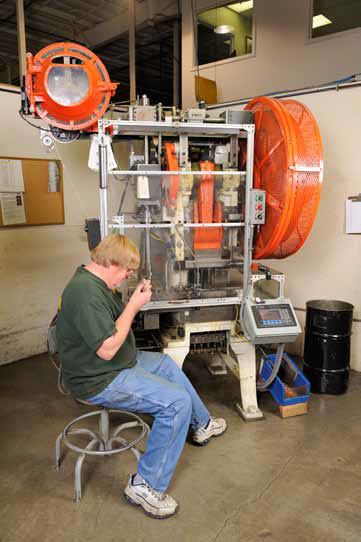Australia's Evolving Firearm Regulations: An In-Depth Exploration of the Nation's Gun Laws
Australia boasts a comprehensive and evolving system of gun control, with firearm regulations primarily falling under the jurisdiction of individual states and territories. The federal government plays a crucial role in regulating the import of weapons, creating a collaborative framework to ensure the safety of its citizens. In this article, we delve into the intricacies of Australia's gun laws, examining their historical development, categories of firearms, licensing procedures, and the current landscape of compliance with the National Firearms Agreement (NFA).
Historical Development and National Agreements:
The late 20th century witnessed a pivotal moment in Australia's approach to gun control. In response to several high-profile murders, the federal government engaged in negotiations with state governments, leading to the establishment of stricter firearm laws. The cornerstone of these negotiations was the National Firearms Agreement (NFA) in 1996. Subsequently, the nation underwent two federally funded buyouts of firearms, voluntary surrenders, and state-led amnesties, resulting in the collection and destruction of over a million firearms - potentially a third of the national stock.
Licensing Requirements:
Owning or using a firearm in Australia necessitates obtaining a firearms license. License applicants must demonstrate a "genuine reason" for possession, excluding self-defense, and must not fall under the category of "prohibited persons." Each firearm must be registered by serial number to its owner, who must also possess a valid firearms license.
National Legislative Structure:
In response to tragic shooting incidents at Port Arthur in 1996 and Monash University in 2002, Australian state and territory governments collaborated through the Australian Police Ministers Council (APMC) and the Australian Government Council (COAG). Three pivotal national agreements were established, shaping modern Australian firearm laws:
National Firearms Agreement (1996)
National Firearms Trafficking Policy Agreement (2002)
National Firearms Control Agreement (2002)
Categories of Firearms:
Australia classifies firearms into distinct categories, each subject to varying levels of control. These categories, as defined by the NFA, include A, B, C, D, H, and R/E, each serving specific purposes and users.
Licensing Procedures:
States issue firearms licenses for reasons such as hunting, sport shooting, pest control, collecting, farming, and agricultural work. License renewals are mandatory every 3 to 10 years, depending on the state. Youth licenses, available from the age of 12, enable educational and sporting firearm use. Convicted criminals and individuals with mental illness are prohibited from obtaining licenses.
While Australia's firearm regulations have taken center stage in discussions about public safety and responsible ownership, it's important to note the diverse landscape of leisure activities in the country. Amidst the evolving framework of firearm laws, there's a parallel narrative unfolding in the digital realm with the rise of Australian online casinos. As the nation prioritizes stringent gun control measures, a growing number of Australians are finding entertainment and excitement, including free attractive bonuses, in the world of online gaming. These virtual casinos, regulated to ensure fair play, offer a modern alternative for those seeking leisure activities within the bounds of the law. While the focus remains on maintaining the integrity of firearm regulations, the emergence of online casinos, complete with enticing bonuses, adds a new dimension to the evolving cultural and recreational landscape in Australia.
Compliance with the National Firearms Agreement:
A 2017 study commissioned by Gun Control Australia revealed that Australian states have relaxed gun laws since the introduction of the NFA, with no jurisdiction fully complying with the agreement. Some deviations include allowing supervised children to shoot guns and relaxing the mandatory cooling-off period for weapon purchases. The study highlighted the need for continued scrutiny and evaluation of compliance with the NFA, emphasizing the evolving nature of Australia's firearm regulations.
Australia's commitment to firearm regulation is evident in its collaborative approach between federal, state, and territory governments. The nation's journey from the implementation of the NFA to the present highlights the ongoing effort to balance responsible gun ownership with public safety. As gun laws continue to adapt, Australia remains vigilant in its pursuit of effective firearm regulation.

PRODUCING THE BULLET JACKET
All our bullet jackets are made from gilding metal, a copper alloy composed of 95% copper and 5% zinc. In order to match our different bullet requirements and meet stringent quality objectives, we buy nineteen different strip sizes of gilding metal and require three times more dimensional and quality control than is considered standard in the copper manufacturing industry. In fact, Olin Brasshas a special alloy exclusive to Sierra Bullets. This enables us to build extremely high uniformity into every one of our finished bullets.
The bullet begins to take shape during the manufacturing process when the jacket material is first blanked and then brought through a series of drawing processes. Special tooling made in our own tool and die shop ensures that the jacket is drawn evenly and that uniform wall thickness is maintained for accuracy. Jackets which have been drawn to the proper wall construction are then trimmed to a length with a tolerance of +/- 0.001.” This ensures consistent weight and proper forming when the bullet is assembled.
After each step, the bullet jackets are washed and rinsed using a special cleaning process developed by our experienced personnel. During each phase of production, roving quality control inspectors check specifications to ensure that the only part to move on is a perfect one. Reports on the quality of parts being manufactured are maintained in every department and are periodically reviewed by shift supervisors.
